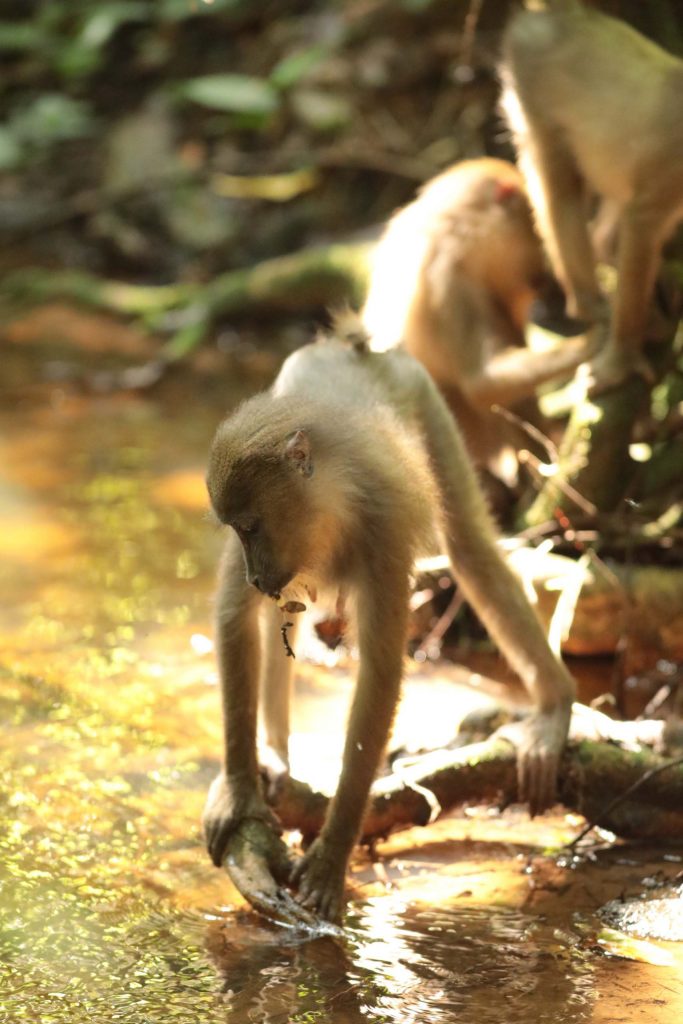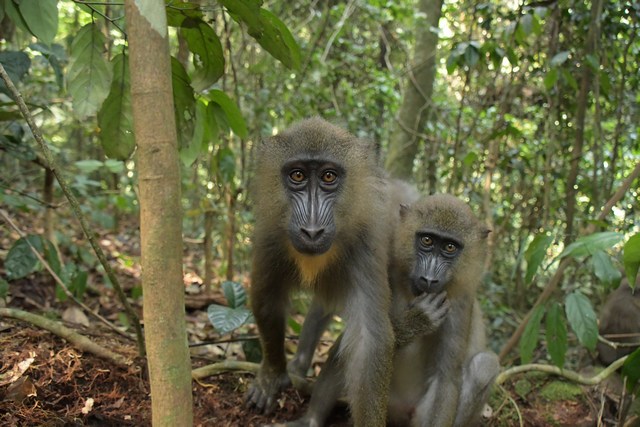The order of primates includes more than 400 species - including the genus Homo -¾ of which are threatened with extinction. These species open up a unique window onto our own evolutionary history and our particularities as a species. Primates present an exceptional diversity of ecologies, life histories, societies and cultures. Such traits cannot be fossilized, and their study in captivity can suffer from many biases. The disappearance of a population therefore translates into an irremediable loss for our knowledge of the social, cognitive, emotional and cultural faculties of our non-human ancestors.

The Evolutionary Anthropology team is conducting two long-term field programs on natural populations of non-human primates in Africa living in contrasting ecosystems:
- the Mandrillus Project in southern Gabon, which since 2012 has been continuously monitoring the world's only habituated population of mandrills(Mandrillus sphinx), a social forest species known worldwide for its flamboyant colors and pronounced sexual dimorphism.
- the Tsaobis Baboon Project, which has been monitoring a habituated population of chacma baboons(Papio ursinus) on the outskirts of the Namib desert for 20 years, in an increasingly arid and demanding savannah.






